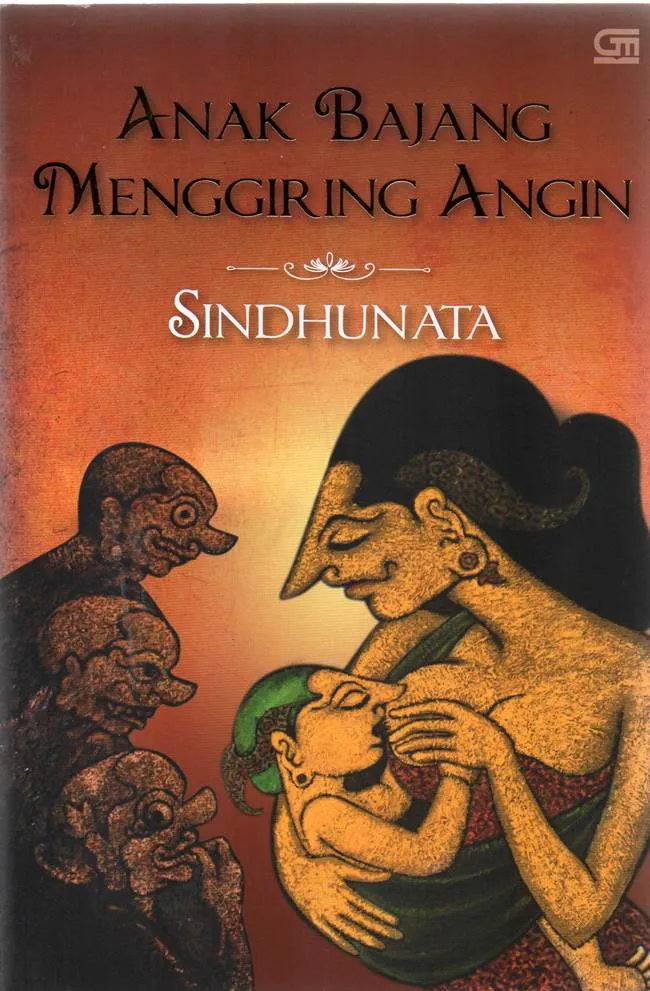Anak Bajang Menggiring Angin

Author: Sindhunata
Category: Fiction, literature
Language: Indonesian
Publication Year: 2018
Pages: 488
Description:
"Anak Bajang Menggiring Angin" by Sindhunata is a fascinating retelling of the Ramayana, infused with Indonesian cultural elements and a unique philosophical depth. Sindhunata masterfully reimagines the epic, not simply retelling it, but exploring the intricate emotions and spiritual questions that underpin the characters and their actions. While the story remains rooted in the traditional framework of the Ramayana, the author gives it a fresh and reflective twist that invites readers to ponder broader existential themes.
One of the main strengths of this book is how it portrays Rahwana, the antagonist of the Ramayana, not merely as a villain, but as a tragic figure burdened with deep emotional and psychological scars. Sindhunata delves into Rahwana's backstory, giving us insight into his pain, desires, and motivations. By humanizing Rahwana, the author challenges the simplistic "good versus evil" narrative, showing how individuals are often shaped by circumstances and internal conflicts. This exploration of Rahwana's character brings a new level of complexity to the epic, making readers question whether he truly deserves to be labeled as a one-dimensional villain.
The book's title, "Anak Bajang Menggiring Angin," which translates to "The Dwarf Child Herds the Wind," refers to the character Hanuman, the mighty monkey god known for his loyalty and strength. Sindhunata portrays Hanuman as more than just a heroic figure; he becomes a symbol of devotion, sacrifice, and the eternal struggle between duty and personal desire. Hanuman's journey, as depicted in the novel, is a blend of myth, philosophy, and introspection, making his character one of the most thought-provoking in the book.
Sindhunata’s writing is poetic and philosophical, often using metaphor and allegory to explore deeper meanings. The language, even in translation, carries a certain rhythm and beauty that makes the reading experience almost meditative. However, this stylistic choice might feel dense or challenging for readers looking for a straightforward retelling of the Ramayana. Sindhunata doesn’t shy away from slowing down the narrative to reflect on life's bigger questions—about fate, the nature of good and evil, and the meaning of suffering.
The women of the Ramayana, particularly Sinta (or Sita, as she is commonly known), are also given significant attention. Sinta is not simply the damsel in distress in Sindhunata’s version. Instead, she is portrayed as a strong, complex figure whose trials reflect the challenges faced by women in a patriarchal society. Her faithfulness to Rama is questioned, her independence is highlighted, and her inner strength becomes more apparent as the story progresses. Sinta's role becomes a meditation on love, loyalty, and personal sacrifice.
Sindhunata also weaves in elements of Javanese culture and mysticism, adding layers of local wisdom to the story. This creates a unique fusion of the traditional Indian epic with Indonesian folklore and beliefs, making the book feel distinctly Southeast Asian. For readers familiar with the Ramayana, this Indonesian flavor gives the tale a fresh perspective. For those less familiar with the original epic, "Anak Bajang Menggiring Angin" offers a rich cultural tapestry that deepens the mythological narrative.
Another key aspect of the book is its reflection on power and leadership. Through the characters of Rama and Rahwana, Sindhunata examines the moral responsibilities that come with leadership. Rama, though often seen as the ideal king, is shown grappling with difficult decisions and moral dilemmas. Rahwana, on the other hand, is a ruler who lets his personal desires cloud his judgment, leading to his eventual downfall. The contrast between these two figures serves as a broader commentary on the nature of power and its impact on those who wield it.
"Anak Bajang Menggiring Angin" is not just a retelling of an ancient epic; it is a philosophical exploration of human nature, morality, and spirituality. Sindhunata’s approach may not be for everyone—especially if you're looking for an action-packed, fast-paced adventure—but for readers who enjoy literature that makes them think and reflect, this book is a treasure. The blend of mythology, philosophy, and Javanese culture makes it a unique contribution to Indonesian literature, and it remains a deeply respected work in the country’s literary canon.
In short, this is a book that invites readers to see the Ramayana in a new light. It asks difficult questions, explores the grey areas between good and evil, and offers no easy answers. It’s a work that lingers with you long after you've finished reading, as you continue to ponder the fates of its characters and the philosophical challenges they faced.
Personal Notes:
Back to Home